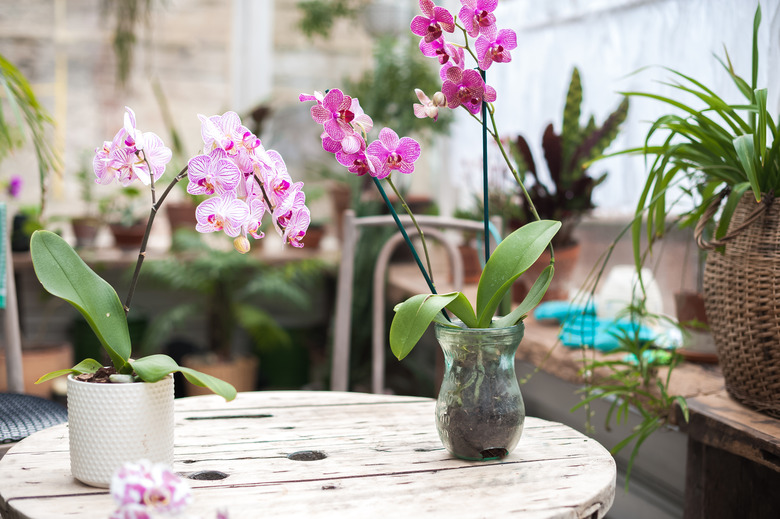How To Grow Orchids From Seeds
We may receive a commission on purchases made from links.
Growing orchids (family Orchidaceae) from seed is particularly challenging since the seeds do not contain stored nutrients for successful germination and growth. To grow orchids from seeds, the home gardener must first provide a solution containing the necessary nutrients for the orchid seed to develop.
Orchid seeds cannot grow in conventional potting soil like other plants, even in ideal climates. Propagating from seed takes patience and a common knowledge of how orchid seeds germinate to produce beautiful, flowering orchid plants.
Germinate the Seeds
1. Sterilize the Flasks
Fill a large stockpot with water and set it on the stovetop to boil. Grasp two clear, glass flasks with tongs and submerge them in the boiling water. Submerging the glass flasks in the boiling water sterilizes them, providing an environment that discourages pathogenic bacteria and fungi.
2. Add the Agar
Remove the glass flasks with the tongs and set them on a clean towel to dry. Insert a funnel into one of the glass flasks and pour nutrient-rich agar into it, with nutrients that are formulated specifically for orchids, which you can find online. Pour a 1/2-inch layer of agar into the bottom of the flask, or enough to coat the bottom without splashing onto the sides.
3. Put the Seed in Water
Pour a 1-inch layer of distilled water into the other sterilized glass flask. Place all the orchid seeds into the distilled water.
4. Pick Up the Seeds
Squeeze an eyedropper and dip it into the flask containing the orchid seeds. Release the bulb of the eyedropper, allowing the water and orchid seeds to enter the eyedropper. Pull the eyedropper out of the distilled water flask, and insert it into the flask containing the sterilized agar.
5. Scatter Onto the Agar
Hold the eyedropper over the agar solution and squeeze the bulb until the orchid seeds are scattered on top of the sterilized agar.
6. Put Under Light
Close the top of the flask containing the orchid seeds with a cotton or foam flask stopper. Place the glass flask in a dimly lit location or under artificial grow lights, depending on the species. Set the timer on the grow lights to provide at least 14 hours of light daily until the orchid seeds germinate, which can range from a few months to a few years depending upon the variety of orchid seed you have.
7. Monitor for Roots
Examine the roots of the growing orchid plants in the flask. Gently pull the orchid plant from the agar when the roots are at least 1/4-inch in length. Use long tweezers to pull the orchids from the agar, and rinse any remaining agar from the orchid roots with clean water.
Plant the Orchid Seedling
1. Add the Bark
Place a layer of fir bark chunks in a 2- to 3-inch diameter container. If you do not have access to fir bark chunks, many garden centers have potting mixes specially formulated for orchids. You can also make your own orchid mix.
2. Pot the Orchid
Set the orchid plant on top of the fir bark chunks, spreading the roots out around the plant. Continue to fill the pot and surround the orchid plant with fir bark chunks until the container is full.
3. Keep in Bright Light
House the orchid container in an indoor location that receives filtered light or full sun, depending upon the orchid species. Orchids growing under artificial grow lights will require the lighting to remain on at least 12 hours per day.
4. Water the New Orchid
Water the orchid plant once per week until the fir bark chunks are thoroughly moistened. Only water the orchid plant when the fir bark has dried.
5. Fertilize the Orchid
Fertilize the orchid plant with an orchid fertilizer according to the fertilizer's included instructions. Alternatively, feed weekly or biweekly with a 20-20-20 liquid fertilizer diluted with water to one-quarter to one-half strength. Always water before and after fertilizing your orchids
6. Repot As Needed
Repot the orchids into slightly larger containers every 12 to 18 months, or whenever you see roots above the soil surface. With proper care, your orchid should begin producing flowers in two to 10 years, depending on the species.
